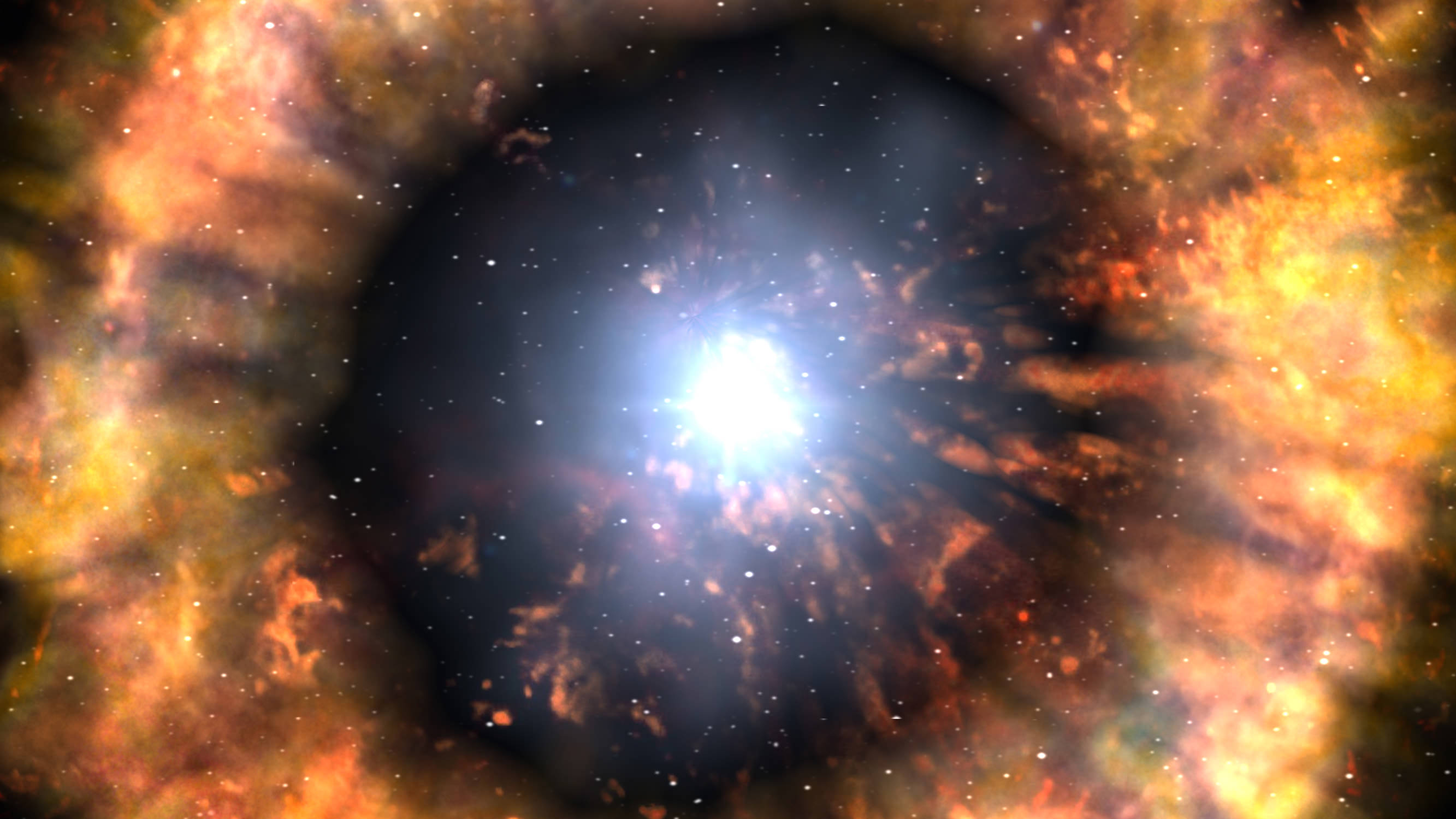[/caption]
Supernovae are generally considered as fast and furious events. For the Type II, core collapse supernovae, the core implodes almost instantaneously although it takes some time for the shockwave to escape the star. As it does, the star brightens in what’s known as the “rise time” of the supernova. For most Type II supernovae, this takes about a week.
So what are astronomers to make of supernova 2008iy that had an unprecedented rise time of at least 400 days?
From the time it was discovered, SN 2008iy was an oddball. When its spectra was analyzed, it was placed in the rare IIn subclass. This subclass is reserved for supernovae that feature narrow emission lines. Most supernovae have broad emission lines, if they even have emission lines at all.
To learn more about the history of this unusual case, astronomers at the University of California, Berkeley turned to archival images from the Palomar Quest survey. They searched images of the region to trace back the supernova as far as July of 2007, before which, the star was too faint to appear in images. Thus, the supernova brightening started at least that early and continued until late October of 2008 giving it a rise time at least four times as long as any previously discovered supernova.
The main clue to explain this mystery stemmed from the unusual emission lines. Generally, stars and supernovae are characterized by their absorption spectra which are caused when relatively cool gas stands between a hotter source and our detection. To generate emission lines, there must been a relatively dense medium being excited by the supernova. Furthermore, the fact that the lines were narrow implied that it was fairly motionless.
Together, this pointed to the progenitor undergoing a heightened period of mass loss prior to the detonation. The idea is such that the progenitor had shed large amounts of material. When the supernova occurred, this shell initially obscured the event. But as the ejecta from the supernova overtook the relatively stationary earlier shells, the brighter material slowly seeped out giving rise to the 400 day rise time.
While all stars undergo a period of mass loss in their post main sequence life, such a dense shell would be uncommon. To explain this, the authors turned to a type of star known as a Luminous Blue Variable. These stars are typically near the theoretical limit for the mass of a star (150 times the mass of the sun). Due to their extreme mass, they have strong stellar winds which periodically blow off large amounts of material that could create shells similar to those necessary for SN 2008iy. Unfortunately, this event was so distant that it could not be resolved to search for such a nebula. Even the host galaxy proved difficult to distinguish due to its faintness, although it is believed to be an irregular dwarf galaxy. Eta Carinae is one such luminous blue variable star. If perhaps one day soon it decides to turn into a supernova, it too will unfold in slow-motion.

